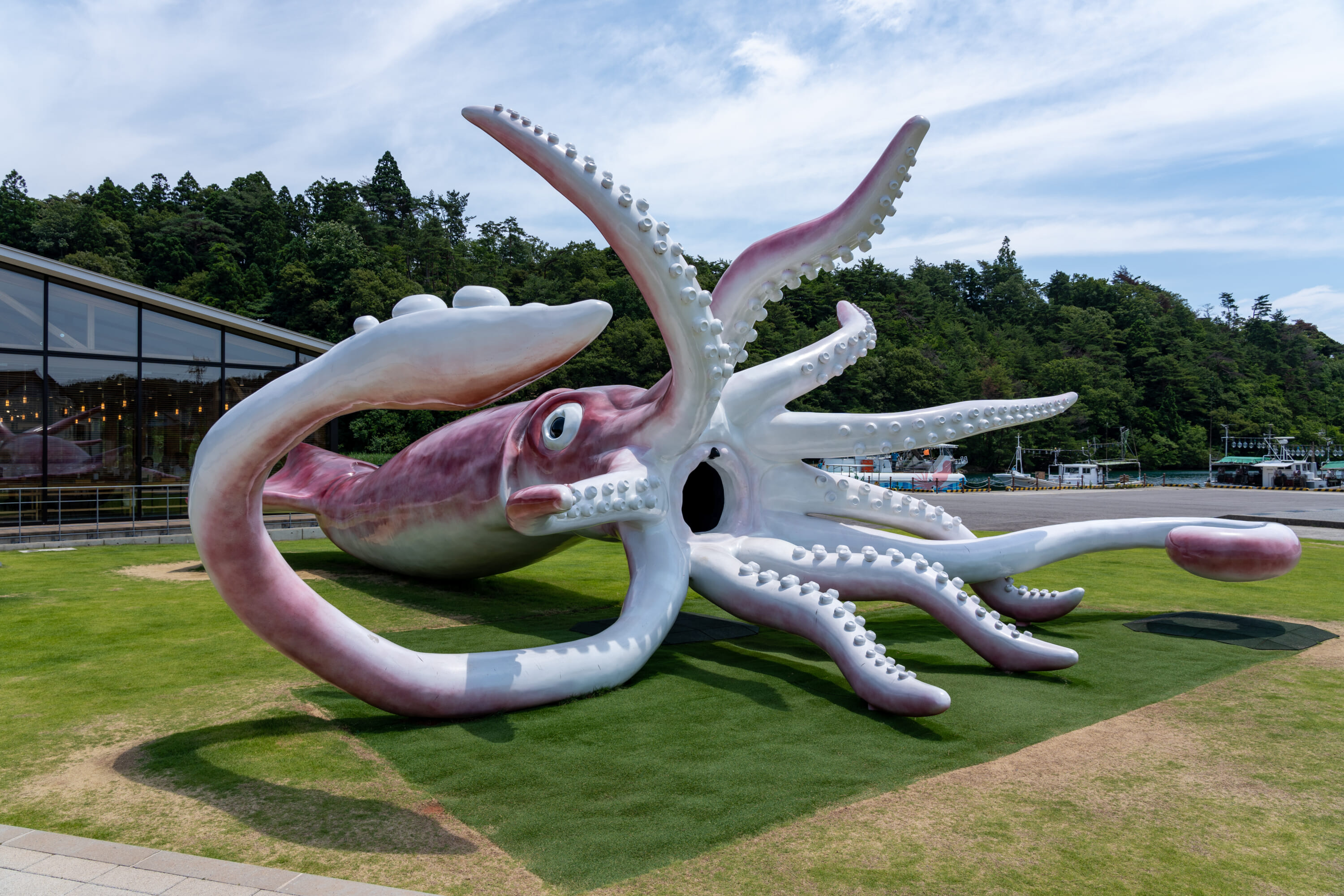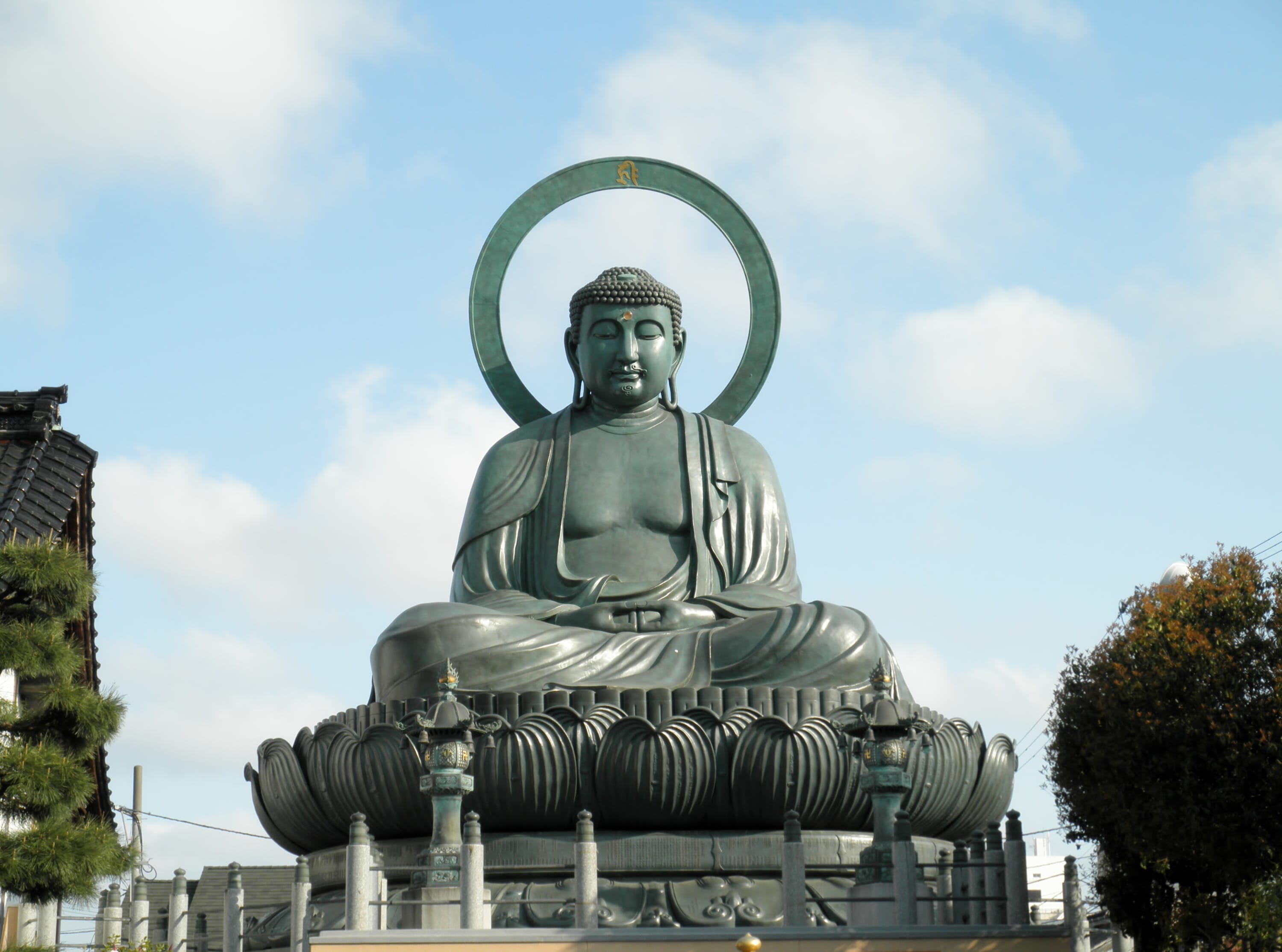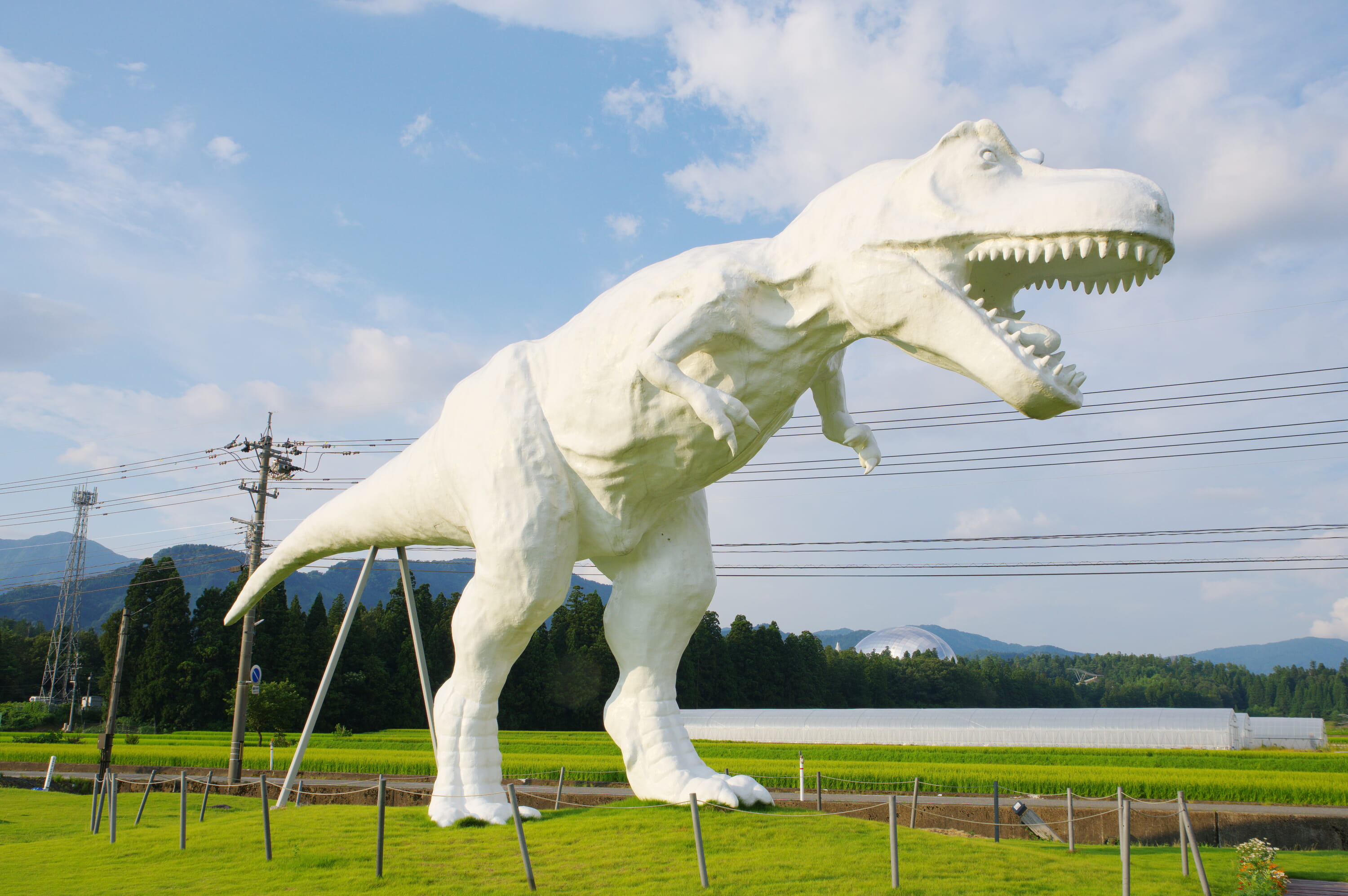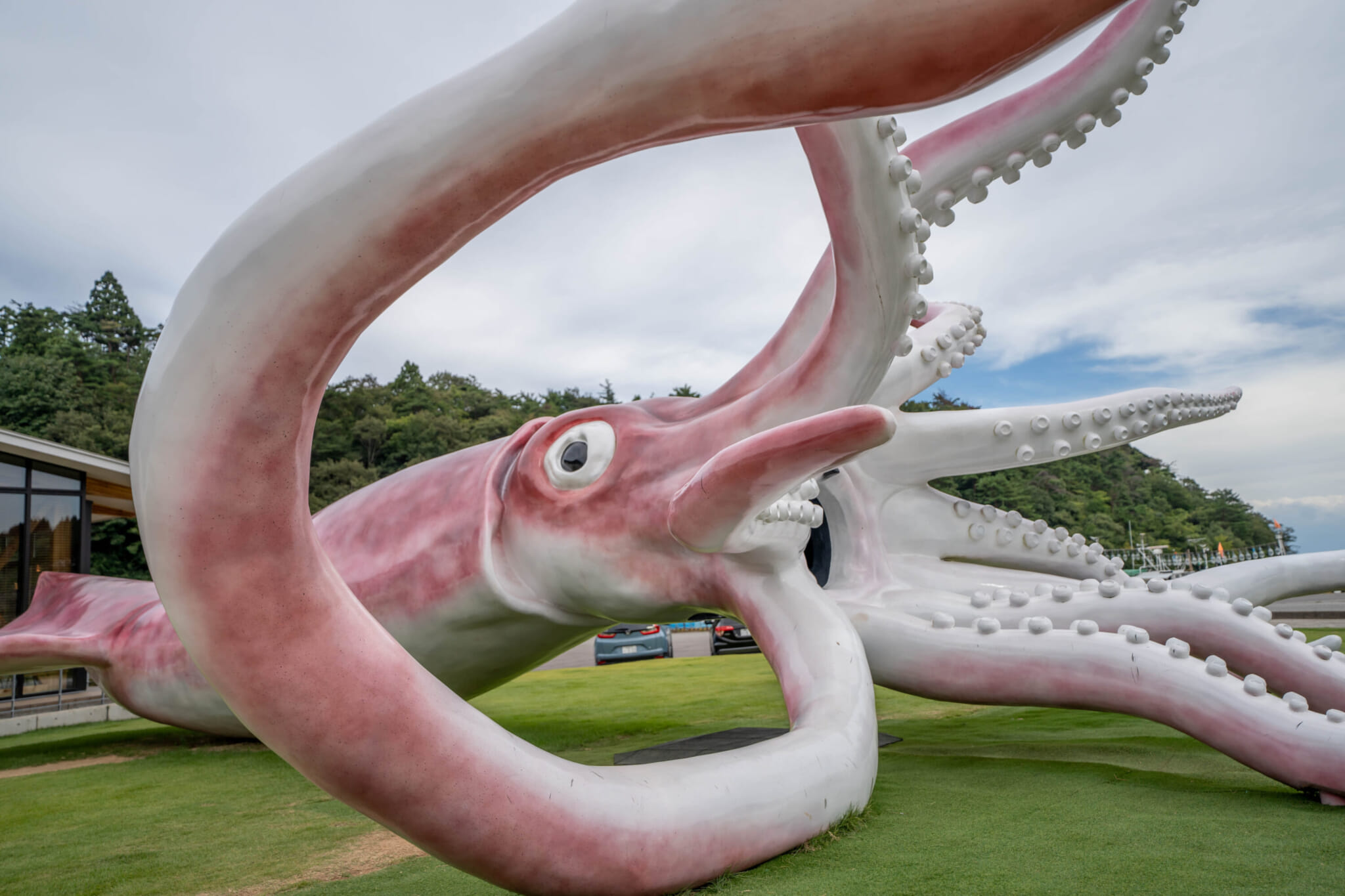
The King Squid of Noto, Ishikawa posing with its tentacles extended.
Royal Squid Statue
Not many municipalities would think to promote themselves with a colossal eldritch beast, but that’s exactly what Noto, in Ishikawa Prefecture, did. To showcase its fishing fleet’s haul of surumeika (Japanese common squid) — one of the biggest in Japan — the small port town built the Ika King (Squid King) in March 2021. The fiber-reinforced cephalopod sculpture, measuring 13 meters across and 4 meters high, sits outside Squid Station Tsukumall, a roadside stop along Noto Uchiura Route 35 facing Tsukumo Bay.
Despite its popularity, the Ika King’s inception was mired in controversy. Noto made headlines at home and abroad when it was reported that the town mostly spent funds from the central government that were meant for COVID-19 relief — roughly ¥25 million, covering more than 90% of the squid’s construction costs. Only about ¥2 million came from Noto’s own coffers. But the town’s big bet seems to have paid off. Local officials reckon that the Ika King has helped attract at least ¥600 million in tourism spending — 22 times the cost — and even more in free publicity.

The Buddha statue of Daibutsu-ji Temple stands tall.
Great Buddha Statue
Quick: Name Japan’s three oldest giant bronze Buddhas. The statues at Todai-ji temple in Nara and Kotoku-in temple in Kamakura immediately come to mind. But what about the one at Daibutsu-ji temple in Toyama Prefecture’s Takaoka city? Probably not.
The Takaoka Great Buddha is a 16-meter-tall seated behemoth that was completed in 1933 after nearly three decades of construction. Its metalwork — a prized Takaoka craft — was both an aesthetic choice and safety precaution. Made of wood when it first went up in 1745, the statue burned down twice, in 1821 and 1841, before the temple settled on a bronze version. Visitors can go inside the statue, which has paintings, scrolls and other artifacts.

The Great Whitesaurus poses with the Fukui Dinosaur Museum in the background.
Giant Dinosaur Statue
Visitors to Fukui Prefecture will likely have heard of the region’s famed triad of crabs, washi paper and dinosaur fossils. What better way to generate buzz than with a monument combining two of the three? When prefectural officials unveiled the Whitesaurus in 2009, the Tyrannosaurus rex-inspired fictional theropod dinosaur was made of white washi paper. Four years later, it was moved to Katsuyama to serve as a landmark for the nearby Fukui Prefectural Dinosaur Museum, and it quickly became a tourist draw.
Then, in 2016, the Whitesaurus’ head fell off. (Apparently, its paper shell was too flimsy.) Local officials sprang into action, launching an online crowdfunding campaign and temporarily substituting the damaged dinosaur with a giant egg. Restored in late 2017 with donations of around ¥8.5 million, the 7-meter-tall, 17.5-meter-long Whitesaurus is identical to the original — except this time it’s made of a sturdier fiber-reinforced plastic instead.









